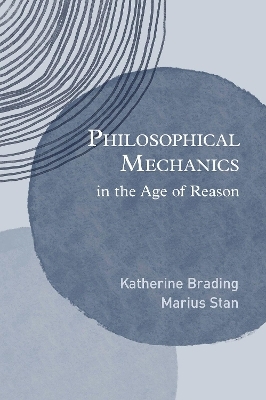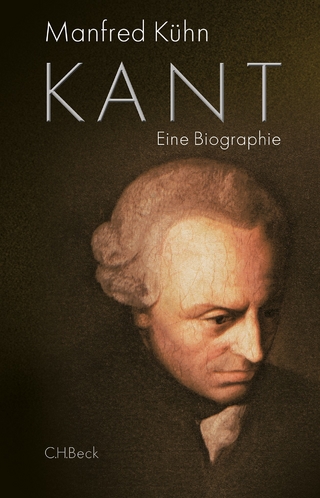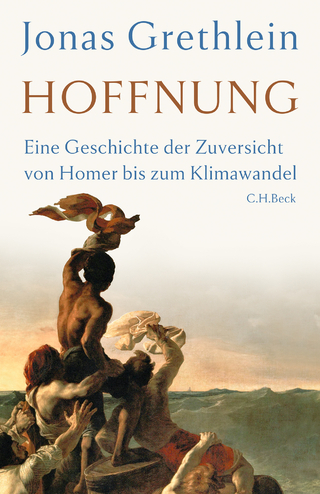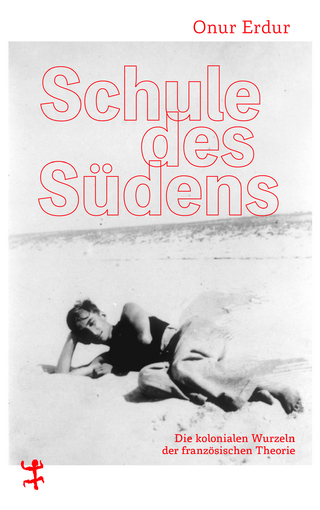
Philosophical Mechanics in the Age of Reason
Oxford University Press Inc (Verlag)
978-0-19-767895-4 (ISBN)
From pebbles to planets, tigers to tables, pine trees to people; animate and inanimate, natural and artificial; bodies are everywhere. Bodies populate the world, acting and interacting with one another, and they are the subject-matter of Newton's laws of motion. But what is a body? And how can we know how they behave? In Philosophical Mechanics in the Age of Reason, Katherine Brading and Marius Stan examine the struggle for a theory of bodies.
At the beginning of the 18th century, physics was the branch of philosophy that studied bodies in general. Its primary task was to provide a qualitative account of the nature of bodies, including their essential properties, causal powers, and generic behaviors. Pursued by a variety of figures both canonical (from Leibniz to Kant) and less familiar (from Du Châtelet and Euler to d'Alembert and Lagrange), this proved a difficult task. At stake were the appropriate epistemologies and methods for theorizing about the natural world. Solutions demanded the combined resources of philosophy, physics, and mechanics: what Brading and Stan call a “philosophical mechanics.”
Brading and Stan analyze a century of widespread, concerted efforts to solve “the problem of bodies,” they examine the consequences of the many failures, both for the problem itself and for philosophy more generally. They reveal relationships among disparate themes of 18th century physics and philosophy, from the nature of matter to the motion of a vibrating string; causation to the principle of least action; and the role of subtle matter in collision theory to analytic mechanics. All of these, Brading and Stan argue, are related to the eventual emergence of physics as an independent discipline, autonomous from philosophy, more than a century after Newton's Principia. This book provides a new framing of natural philosophy and its transformations in the Enlightenment; and it proposes an account of how physics and philosophy evolved into distinct fields of inquiry.
Katherine Brading is Professor of Philosophy at Duke University. She is co-editor of Symmetries in Physics: Philosophical Reflections (with Elena Castellani) and author of Emilie Du Châtelet and the Foundations of Physical Science. Marius Stan is Associate Professor of Philosophy at Boston College. He is author of Kant's Natural Philosophy.
1. A Golden Age
1.1. Introduction
1.2. The Problem of Bodies
1.3. Philosophical mechanics
1.4. Constructive and principle approaches
1.5. The Unity of Physical Theory
1.6. Collisions and constraints: PCOL and PCON
1.7. Methods
1.8. Audience
1.9. Overview
1.10. Conclusions
2. Malebranche and French collision theory
2.1. Introduction
2.2. Correcting Descartes: Malebranche's early theory of collisions
2.3. Leibniz's objections to Malebranche's early collision theory
2.4. Malebranche's mature theory of collisions
2.5. After Malebranche: hard bodies in the competition of 1724 and beyond
2.6. After Malebranche: elastic rebound and the prize competition of 1726
2.7. Open questions, hidden problems
2.8. Conclusions
3. Beyond Newton and Leibniz: bodies in collision
3.1. Introduction
3.2. Newtonian collisions
3.3. Leibniz on collisions
3.4. Leibnizian collisions in Hermann and Wolff
3.5. The Problem of Collisions (PCOL)
4. The Problem of Bodies
4.1. Introduction
4.2. The scope and remit of physics
4.3. The Problem of Bodies: Nature and Action
4.4. The Problem of Bodies: Evidence and Principle
4.5. The methods of Newtonian physics
4.6. Substance and causation
4.7. The goal: a philosophical mechanics
5. Body and force in the physics of collisions: Du Châtelet and Euler
5.1. Introduction
5.2. Nature: extension as a property of bodies
5.3. Action
5.4. Du Châtelet and Action
5.5. Euler and Action
5.6. Conclusions
6. Searching for a new physics: Kant and Boscovich
6.1. Introduction
6.2. The physics of bodies in Kant and Boscovich
6.3. Kant's philosophical mechanics
6.4. Boscovich's philosophical mechanics
6.5. Conclusions
7. Shifting sands in philosophical mechanics
7.1. Introduction
7.2. Methodology
7.3. Elusive mass
7.4. Contact action
7.5. A general theory of bodies in motion
7.6. Shifting sands
7.7. From rational to philosophical mechanics
7.8. Rational mechanics ascendant
7.9. Conclusions
8. Early work in the rational mechanics of constrained motion
8.1. Introduction
8.2. Personnel and work sites
8.3. New territory: oscillating systems
8.4. The compound pendulum
8.5. From special problems to general principles
8.6. Implications for philosophical mechanics
8.7. Conclusions
9. Constructive and principle approaches in d'Alembert's Treatise
9.1. Introduction
9.2. Constructive and principle approaches
9.3. D'Alembert's Treatise on Dynamics: its structure and contents
9.4. The Treatise as rational mechanics
9.5. The Treatise as philosophical mechanics: a constructive reading
9.6. The Treatise as philosophical mechanics: a principle reading
9.7. The unity of philosophical mechanics: ontic and nomic
9.8. Nature, Action, Evidence, and Principle
9.9. Conclusions
10. Building bodies: Euler and impressed force mechanics
10.1. Introduction
10.2. Solving MCON
10.3. Newton's Lex Secunda, Euler's principles, Cauchy's laws of motion
10.4. Solving MCON1
10.5. Assessment
10.6. Conclusions
11. External obstacles: Lagrange and the mechanics of constraints
11.1. Introduction
11.2. The Principle of Virtual Velocities and Lagrange's Principle
11.3. Constraints: equations of condition
11.4. Lagrange's Relaxation Postulate: the kinematics and dynamics of constraints
11.5. Philosophical mechanics and Lagrange's Mechanique
11.6. Action
11.7. Evidence
11.8. Assessment
11.9. Conclusions
12. Philosophical mechanics in the Late Enlightenment
12.1. Introduction
12.2. Makers and spaces
12.3. Lagrangian nomic unification
12.4. Molecular ontic unification
12.5. The Cauchy package
12.6. Disunity
12.7. Conclusions: A Golden Age
| Erscheinungsdatum | 14.02.2024 |
|---|---|
| Zusatzinfo | 4 b/w illustrations |
| Verlagsort | New York |
| Sprache | englisch |
| Maße | 224 x 157 mm |
| Gewicht | 771 g |
| Themenwelt | Geisteswissenschaften ► Philosophie ► Geschichte der Philosophie |
| Geisteswissenschaften ► Philosophie ► Metaphysik / Ontologie | |
| Geisteswissenschaften ► Philosophie ► Philosophie der Neuzeit | |
| Naturwissenschaften | |
| Sozialwissenschaften | |
| ISBN-10 | 0-19-767895-5 / 0197678955 |
| ISBN-13 | 978-0-19-767895-4 / 9780197678954 |
| Zustand | Neuware |
| Informationen gemäß Produktsicherheitsverordnung (GPSR) | |
| Haben Sie eine Frage zum Produkt? |
aus dem Bereich


